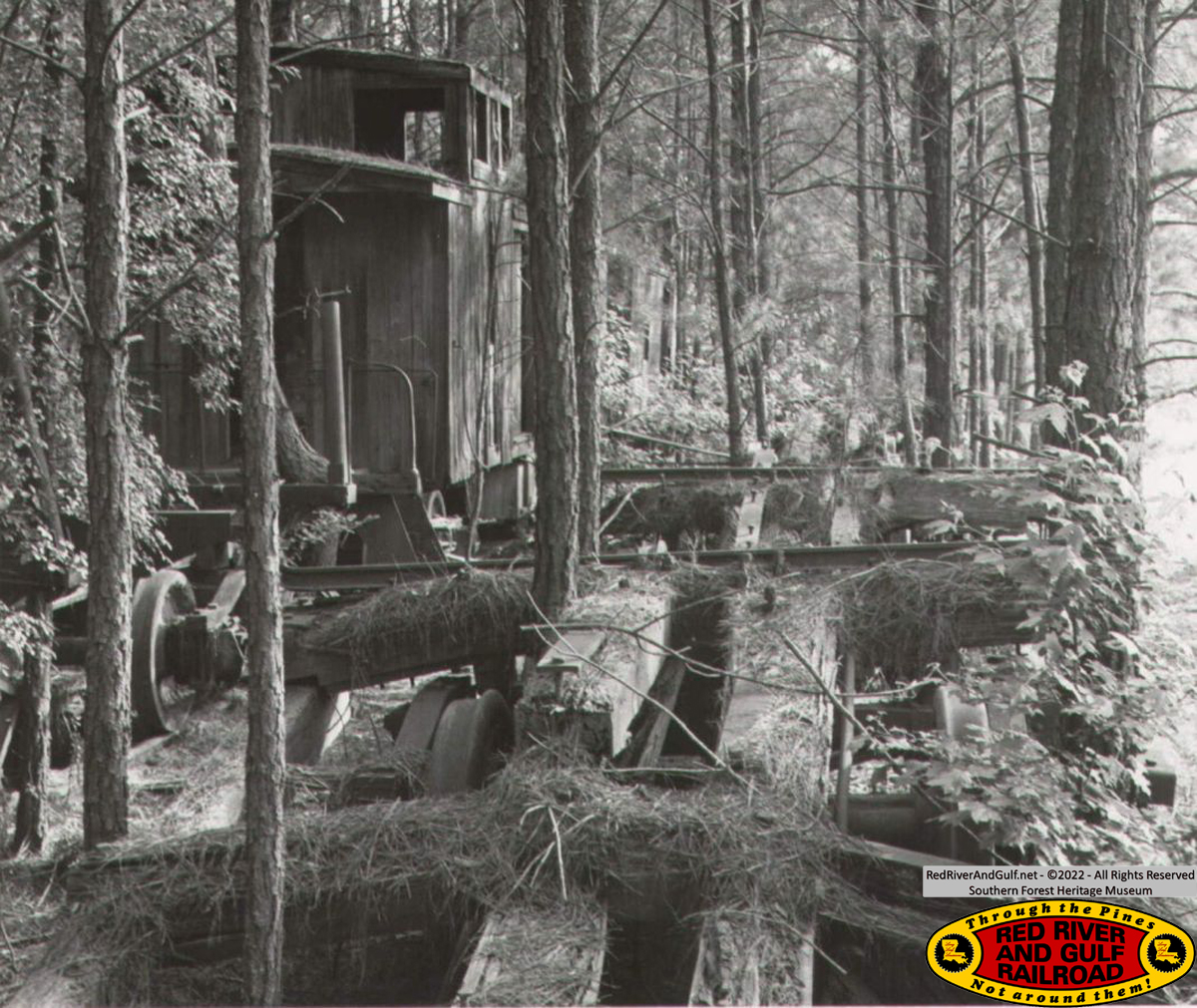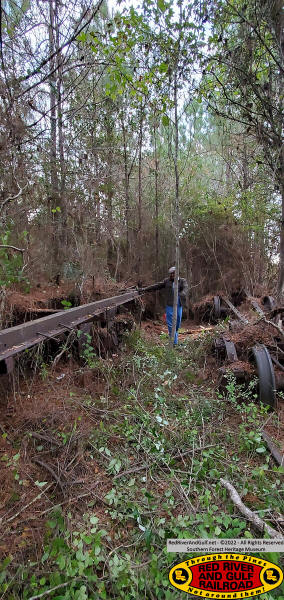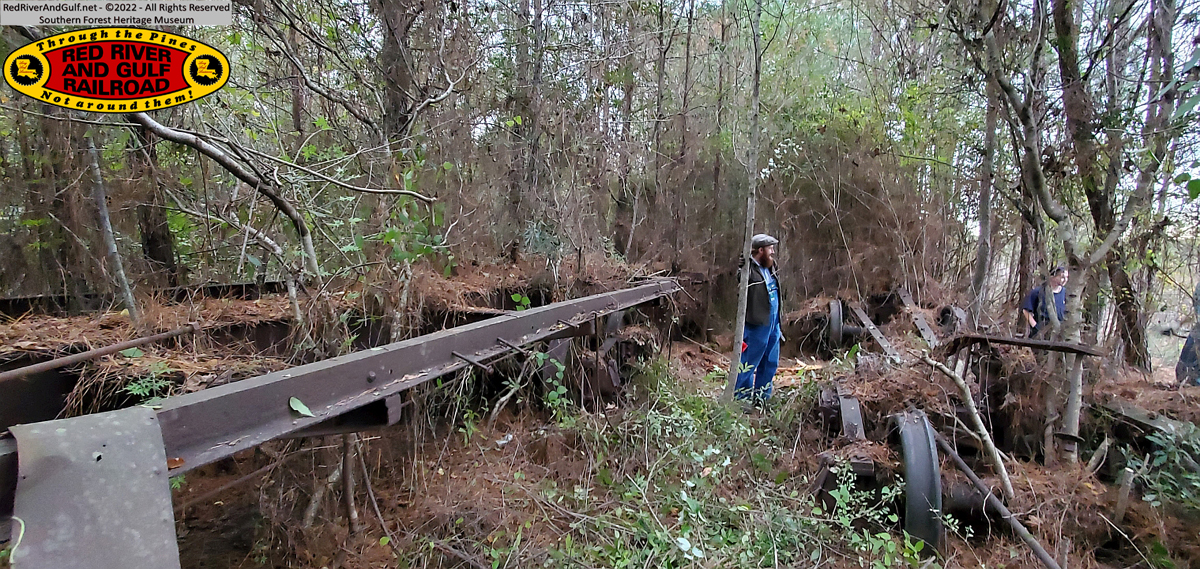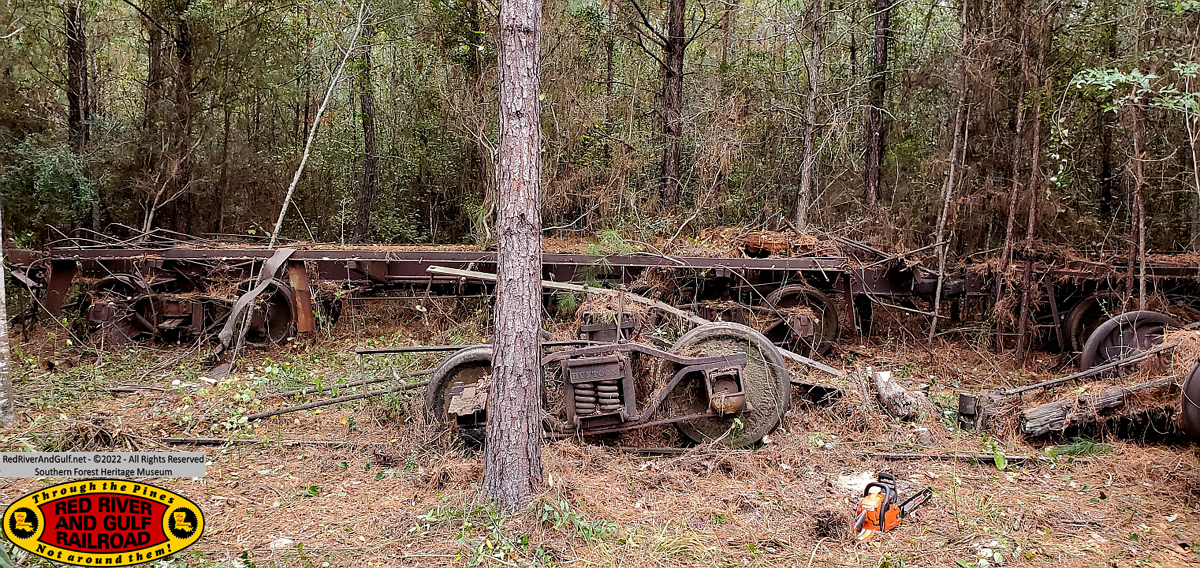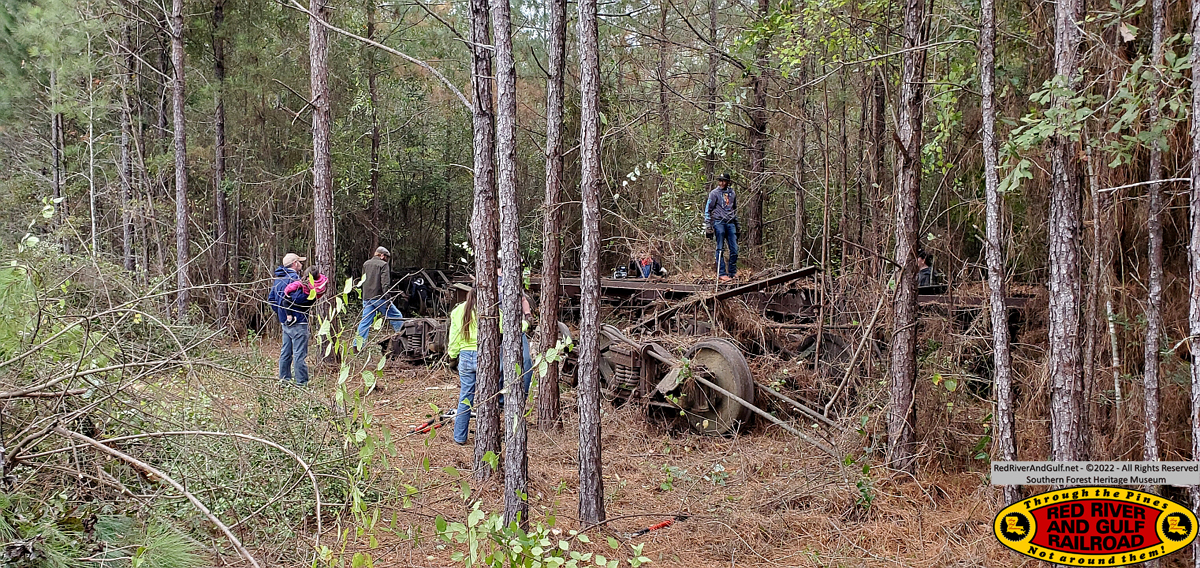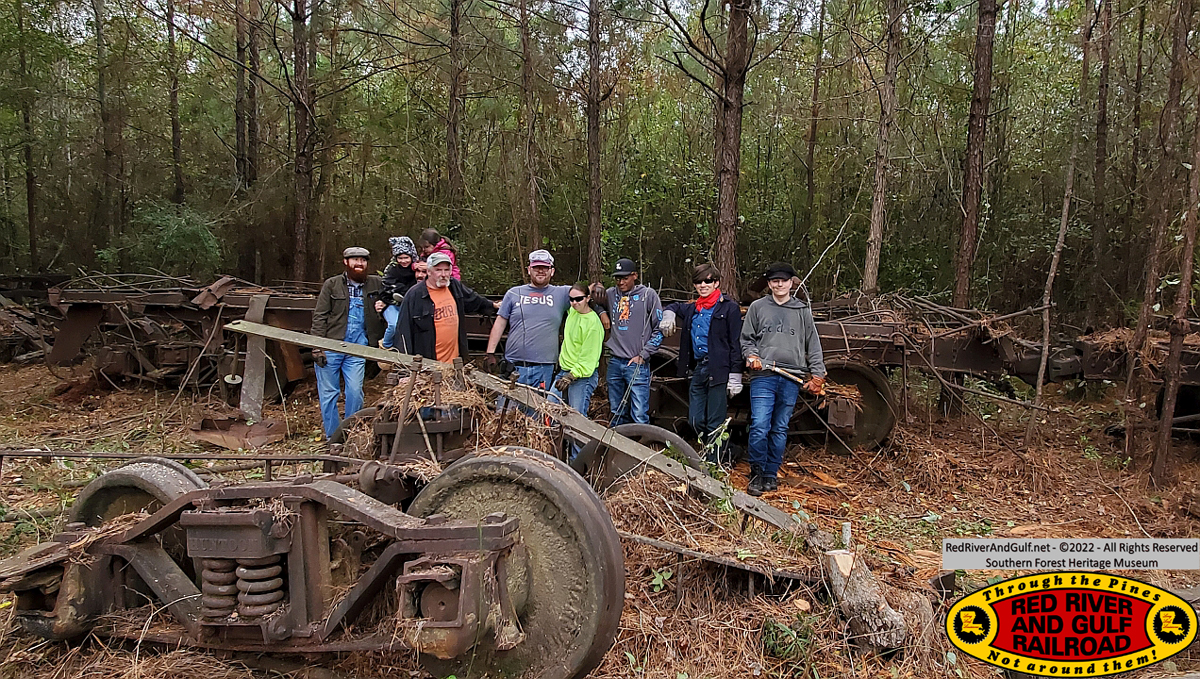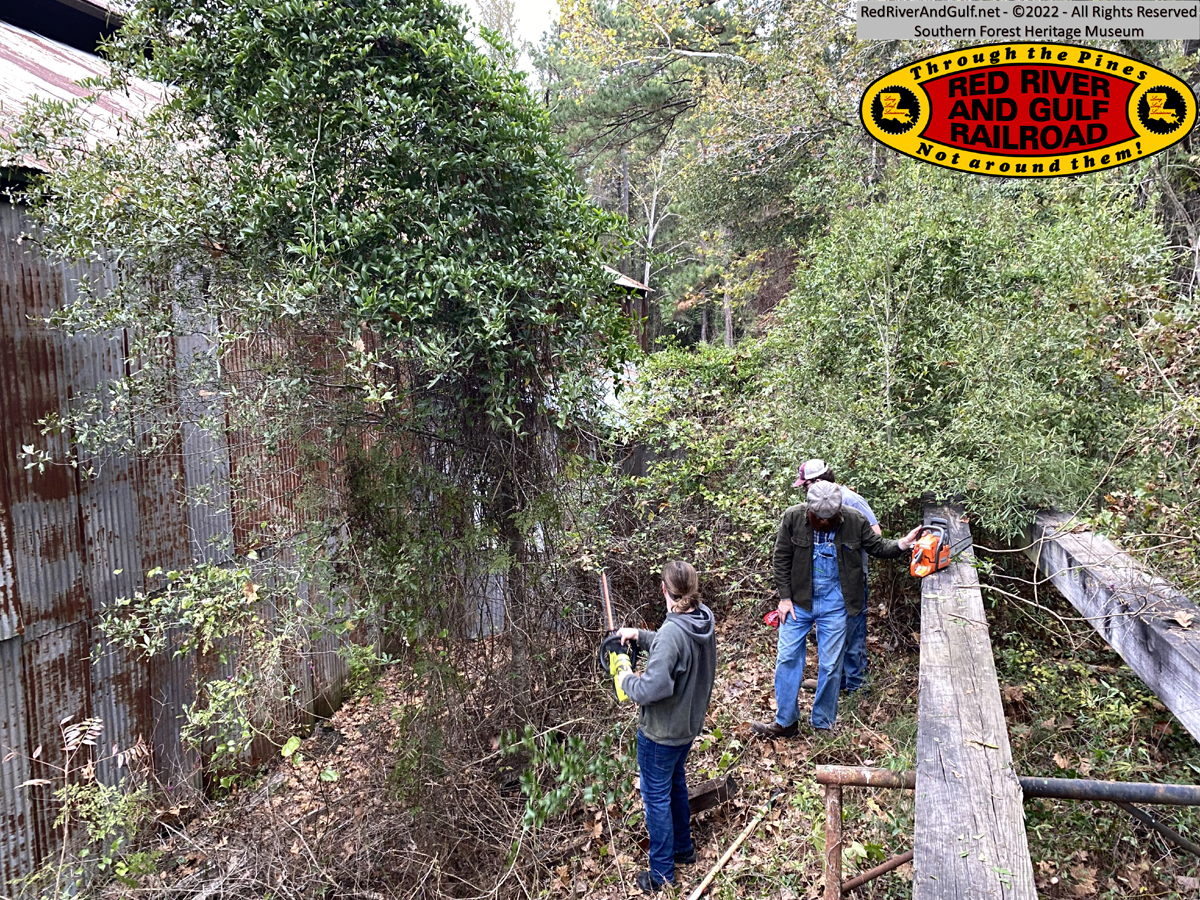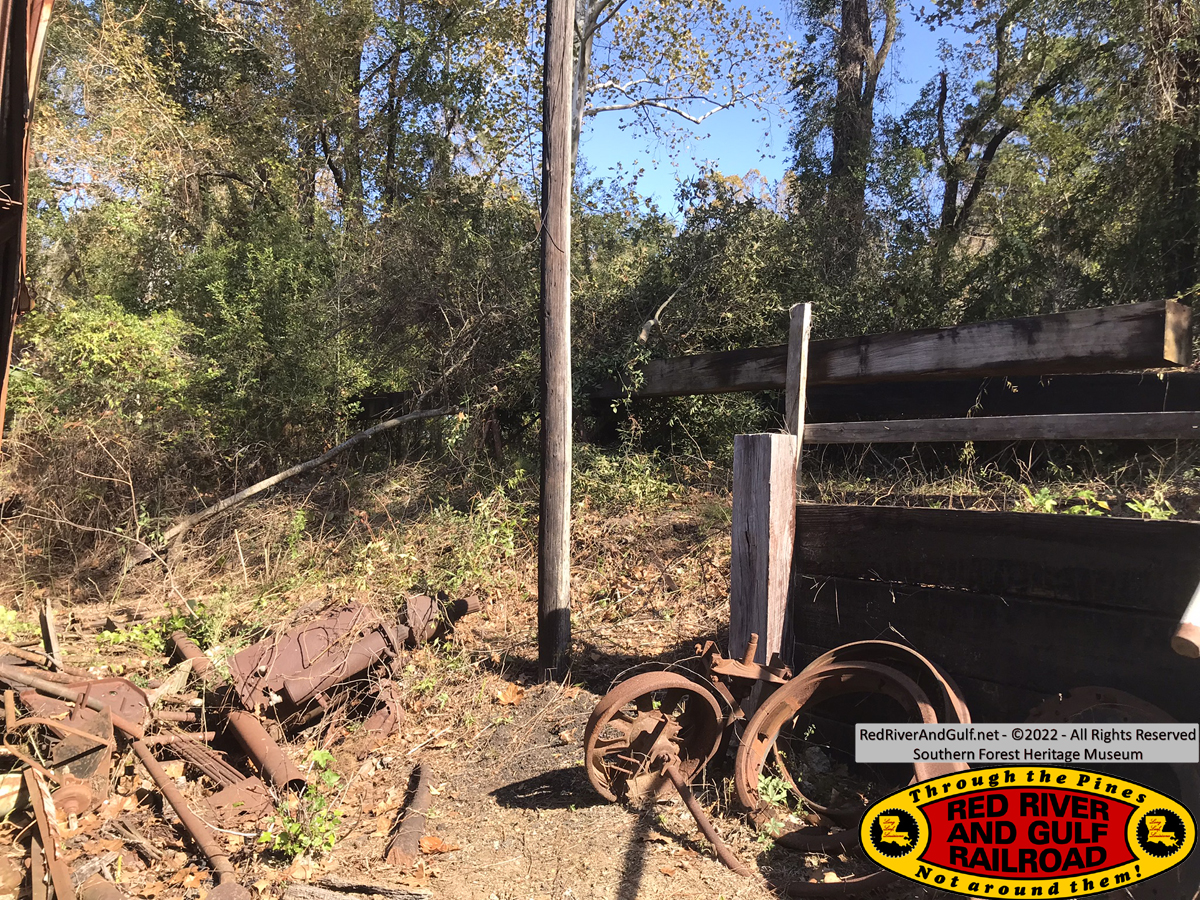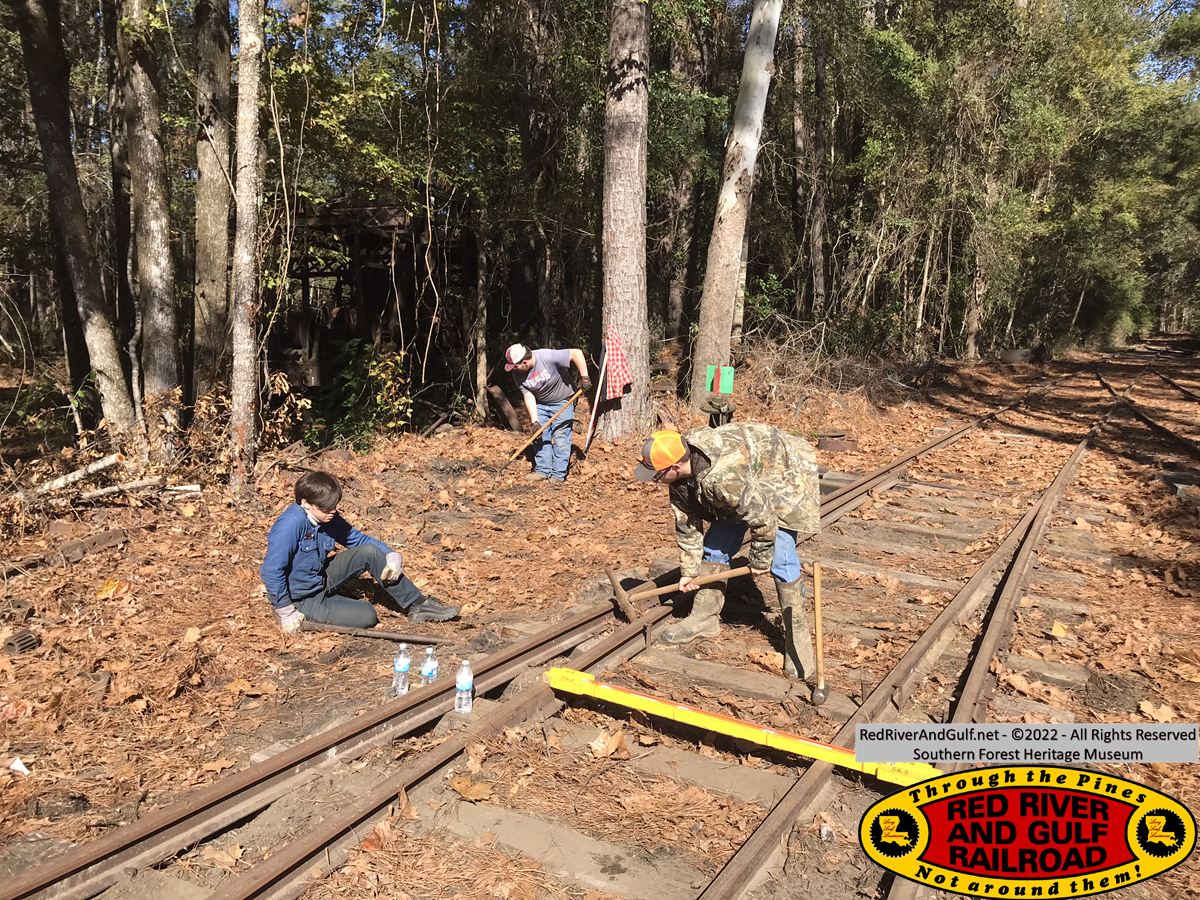|
Volunteer
Railroaders
1. Mike B.
2. Mike M.
3. David H. Sr.
4. David H. Jr.
5. Tucker B.
6. Everett L.
7. Chuck L.
8. Laura G.
9. Glen A.
10. David H.
11. Angela A.
12. Andrew A.
13. Wimbley V.
14. Ben S.
15. Dylan S.
16. Joseph S.
17. Clint L. Jr.
Accomplishments
1. Initial survey and brush cut completed around caboose frames #1 and
#5 at Sandersville
2. Forklift cylinders repacked and returned to all-terrain forklift
3. New reinforced air hose for the M4 air horn system installed - air
horn operable again
4. M8 toggle switch replaced - M8 operable again
5. Brush and trees cleared behind Engine House and around McGiffert
#1230
6. Metal bars installed on handcar for better meeting of the gears
7. Ties recently inserted on main line near Engine House leveled,
gauged, and spiked
8. Overhanging brush and limbs cut on Sandersville line from Engine
House to washout
Wednesday 11-16-22
David Hearne Sr. and David Hearne Jr. have been repairing the all
terrain forklift cylinders by repacking them to prevent hydraulic fluid
leaks. The first cylinder was taken off after the Fall Festival and
repacked by David Jr. On Wednesday, MB and David Sr. installed this
first repacked cylinder and removed another cylinder for repacking.
Mike and David then went to the Engine House where they pried loose the
thick steel flat bar that was installed long ago to reinforce the frame
on the Heisler.
David Sr. then went to Alexandria and bought 20 feet of new reinforced
air hose to replace the current vinyl tubing on the M4. The current
vinyl tube is only rated to 40 PSI and has ruptured several times since
it was installed. David also procured a fuel cooler and 10 feet of fuel
hose that will hopefully end the vapor lock issues on hot days in the
fuel system on the M4. This fuel cooler will be installed at a future
session.
Thursday 11-17-22
The Building and Grounds Committee met on Thursday, identified some
immediate repairs at the Planer Mill clerestory regarding the windows,
and discussed the initial phase of Saw Mill repairs. They are also
working on getting the National Historic District that encompasses the
museum updated to include more historic structures, such as the boiler
house and pump house behind the Planer Mill that volunteer crews and
AmeriCorps crews have cleared brush away from in recent months. The work
at the sawmill, which will include significant volunteer involvement,
will be coming up soon. Chuck and David Hamilton, long-time volunteers
who know the sawmill’s history, will be directing this effort. It will
start first at the log intake and entrance area and will involve
carpentry. Please contact Chuck and David if you’d like to assist in
this effort.
Friday 11-18-22
After the board meeting, David Hearne Sr. and Tucker first surveyed
several of the trees near the Engine House that will be taken down to
remove nuisance trees near historic buildings. Next, they replaced the
toggle switch on M8 that was broken at the festival. Some eager festival
goers had broken the metal tip of the “Run-Stop” switch while the M8 was
parked in the Engine House. David brought another switch, removed the
old broken switch, and installed the new one. After getting the key and
cranking the engine, the car would not seem to start. David flipped the
switch around and then - BAM! - the motor started - the switch was
turned the wrong way. With the switch in the right orientation, David
and Tucker headed down the Sandersville line with M8. Armed with
loppers, they cut and removed overhanging limbs and branches from the
track. Arriving at the washout, they surveyed the situation, found that
the washout had pretty well stabilized to its max extent, and discussed
plans and alternatives to address this track trouble.
In the afternoon, Everett, David, Angela, and Tucker headed out to
Sandersville to scout the caboose frames that had been located in the
Long Leaf Yard since the 1950s. The Railroad Operations Committee put
together a plan in the preceding month to arrange the donation of the
frames to the museum, set up an agreement with Crowell Forest Resources
(the landowner) and the museum for volunteers to work on site, lift the
frames with a crane to a truck, and move them to the museum. The goal is
that these frames will be repaired, restored, and rebuilt into passenger
cars to go behind the Heisler, pending successful restoration and other
needed agreements. Everett led the point on getting the written
agreement for recovery of the caboose frames, and after the Friday board
meeting with the agreement signed by the appropriate parties, Tucker
provided the needed volunteer paperwork for the efforts to begin.
Caboose #1 and #5 frames were located quickly based on our prior
scouting trips on the railroad right of way and the initial survey and
brush cut began. Everett had the location spot on in his mind, whereas
Tucker…..thought they were further toward Sandersville Road (which they
were not). The plan is to clear around the frames, recover all pertinent
small metal parts, such as ladders, grab iron, etc., and then work on
moving them to the museum. Two tracks remain from this yard and a great
amount of rail equipment is stored here. Scores of wooden log cars,
cabooses, a steel log car, the livestock car, a camp car, 202’s tender,
and much more still remain in this area. There is also significant spare
other track material (OTM) stored on some of the cars here. The frames
of cabooses #1 and #5 are located on the western track, further away
from Highway 497, and log car remains are on the eastern track closer to
Highway 497. This area is north of Sandersville road. The third caboose
frame is south of Sandersville Road, on the main line track that goes
into the museum. This caboose frame is in between 202’s tender and
several log car remains. The initial survey determined that two log car
trucks will need to be moved from the eastern track in order to get
caboose frames #1 and #5 out.
Saturday 11-19-22
The volunteers met Saturday morning for an operations and safety
briefing in the lodge kitchen. The plan included watching your step,
wearing gloves, cutting brush and stumps to ground level to avoid trip
hazards, and watching out for fellow volunteers. After completing some
paperwork, collecting loppers, sharpening chainsaws, and other
equipment, the volunteer crew of Joseph, David, Everett, Angela, Andrew,
Ben, Dylan, Wimbley, and Tucker carpooled out to Sandersville. The
clearing then commenced in earnest with the crew split into various
functions. A few cut small brush with loppers while others cut small
saplings (generally 6 inches or less in diameter) with the chainsaws.
Another group of “groundsmen” then hauled out the cut material.
By lunch, the frames were easily visible and much easier to maneuver
around. Another session will be needed to clear more brush before the
crane size-up meeting. This next session will also cut the small logs
hauled out into fuel for the Heisler and then brought to the museum.
Doug and Mike visited the crew in the morning and the whole group took
the opportunity to take a closer look at the caboose frames and other
equipment. Immediately next to the frames is an intact steel log car.
Featuring vertical poles that raise and lower into the metal bolsters,
two wooden center sills (that have rotted away), and coming in at
approximately 30 feet in length, this is an extraordinarily unique piece
of equipment. The car was likely built at Long Leaf, placing it in rare
company with its wood log car counterparts. There are two trucks with
similar metal bolsters behind the Engine House near the Insley crane
that were either going to be built into another steel log car or are the
remains of a steel log car that was partially scrapped. Pending
necessary arrangements and agreements, we are hopeful we can also move
this remaining steel log car to the museum, as that would give an
extraordinarily comprehensive logging railroad collection, featuring
equipment types that evolved over the years. David and Everett also
recounted stories of seeing the cabooses and other equipment decades ago
and remarked that its coming “full circle” to bringing them to the
museum. It's pretty exciting to think about!
Lunch was at the Commissary Cafe and was followed by a safety
presentation from Northwestern State University in Natchitoches (NSU)
nursing students. The students were conducting an educational outreach
session for class credit, so we were glad to provide an audience for
their grade! While the students were setting up, Doug thanked the
volunteers for their efforts at the museum, gave an update on the
museum's financial status, and reported the great success of the recent
fall festival where volunteers played a key role in the festival’s
success.
After the NSU nursing students’ presentation, with an expected rain
forecast in the afternoon, the volunteer crew moved M4 from the
Commissary up to the Engine House for airline work. Up at the Engine
House, the volunteers split into a few groups. Angela gave Dylan a
complete tour, a great orientation for new volunteers. David and Joseph
worked on the handcar by installing metal bars Glen fabricated to hold
the gear system firmly in place on the frame. Everett did some running
board repairs while Andrew, Ben, Wimbley, and Tucker took the loppers
and saws to work on the brush and trees behind the Engine House. They
cleared brush away from the building and away from McGiffert #1230
behind the Machine Shop.
With the work on the handcar complete, the volunteers came together for
some testing. Joseph and Tucker moved M4 down to the Car Knocker Shed
lead switch while Wimbley, Ben, Dylan, and Andrew took the repaired
handcar for a test spin. The repairs did the trick, and the handcar
moved along well! The crew had a good time on this test run! The handcar
was a big hit at the fall festival and we hope to replicate this success
at the next festival.
Sunday 11-20-22
Sunday morning, the volunteers wrapped up a few more items and continued
the weekend’s great progress. Everett, Angela, and David replaced the
vinyl airline for M4’s horn with a braided airline rated for a higher
psi. When the horn sounded, everyone knew the repairs did the trick.
Going forward, 30 psi will be the level to use and not to exceed so as
to avoid any more line ruptures. David updated the operator’s
instruction card accordingly and notified all volunteers present about
it.
Clint, Wimbley, Andrew, and Tucker went to work leveling, gauging, and
spiking the ties on the main line near Switch #9 for Engine House lead
#1 that had been inserted back in early October. These were inserted
with a rented mini excavator at the October 8th session. The crew had
the leaves and pine straw cleared away and a good session practicing
spike maul swinging on a beautiful Louisiana morning. Additional ballast
was also shoveled in to tamp the new ties.
With the tasks complete, the volunteers split up. Andrew and Angela
headed down to the lodge to clean up while Everett hit the road for
home. David and Tucker inspected some ties and a large piece of timber,
potentially for use as bridge timber, in the camping area behind the
Engine House. While scouting for potentially another timber in the
camping area, they came across a massive pile of 4-wheel lumber mill
carts. You’ve never seen so many carts just piled up in the woods! There
was also a pile of spare cart wheels, an old road grader that the
scrapper got only part-way on, metal sawdust ducts from the mill, and
concrete piers here and there. You go looking for one thing and then
find something you never knew about.
Lagniappe
The last scheduled volunteer session for 2022 is December 10th. There’s
exciting things going, old projects finishing, and new projects
starting. Please consider joining the fun - we need your help!
The museum will have its annual winter closure from December 15th and
reopen on January 11th, 2023. If you’re helping with planned projects
around the museum during this time, please coordinate with Doug.
We are currently planning the 2023 volunteer session dates and once they
are finalized, we’ll communicate them with everyone.
Have a great Thanksgiving to all our volunteers! We are thankful for all
you do!
-Tucker "Who Dat" Baker
RR&G Road Master
|
.jpg)
.jpg)
-small.jpg)
.jpg)
-small.jpg)
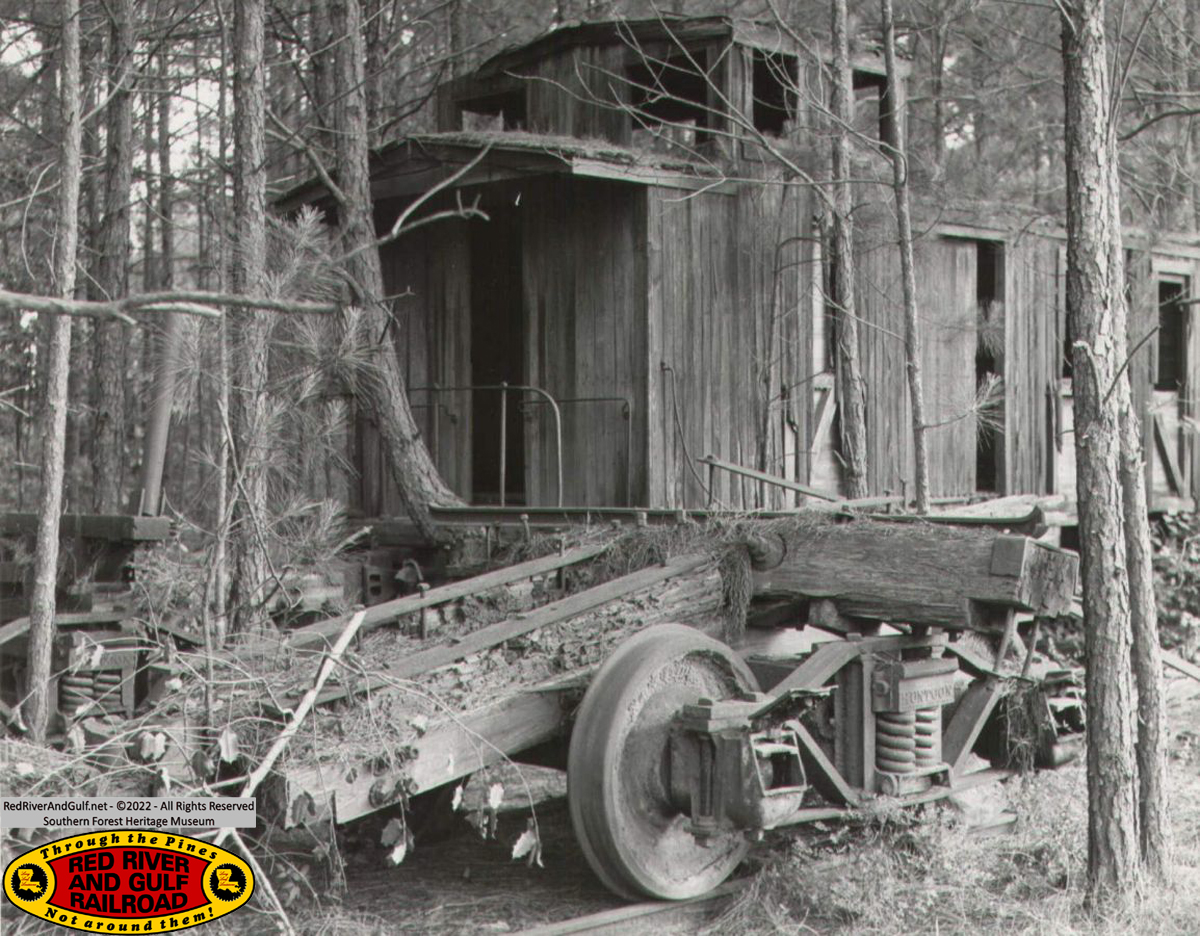
.jpg)
